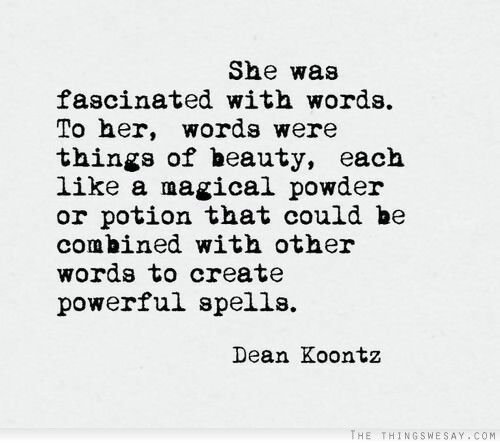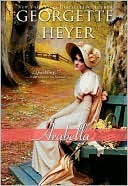ENG 623 – NAU
5.3.17
I have always lived violently, drunk hugely, eaten too much or not at all, slept around the clock or missed two nights of sleeping, worked too hard and too long in glory, or slobbed for a time in utter laziness. I’ve lifted, pulled, chopped, climbed, made love with joy and taken my hangovers as a consequence, not as a punishment.
– John Steinbeck (Travels with Charley, 20)
It’s a funny thing to see a hero fall, even if he fell years ago and you’re only just now witnessing it. I’ve long loved John Steinbeck’s story of the road, Travels with Charley. I’ve loved it for many reasons, but have recently gone through a divorce with the piece due to some scandalous information coming to light. We come to trust our authors. We trust them because they’ve taken us through thick and thin on the wings of their words alone, or on the wheels of a truck named Rocinante, but have always returned us home the better, with more to ponder and new friends to reminisce about while dazing out the window at work. We know that these new experiences and new friends are of the author’s creation and we submit to this reality, but one little word can change all of that.
Nonfiction. One of the many reasons I’ve long loved Travels with Charley is because it is a glimpse into the life and times of one of my favorite literary figures. John Steinbeck, the great American author, wrote this book, subtitled In Search of America, to document and share his own experiences finding the country that he represents in his novels. This book is labeled a nonfiction piece, as it is an account of a trip that Steinbeck took across the country in 1960. More recent sources have made it clear that perhaps this genre categorization is a misrepresentation of the content of the book that was purportedly highly-fictionalized, especially regarding the dialogue that carries the narrative.
Upon reading this information – which I will further discuss throughout this piece – I found myself at a crossroads, of sorts. I could either let the truth of the documented events affect the truth that I’d found for myself in engaging with the book, or I could choose to understand that the truth of nonfiction is complex in nature and should not negate the growth that was effected by this piece. I have chosen to seek a deeper understanding of how Steinbeck approached capturing his refamiliarization with his country and why he chose this approach. I have been fortunate enough to be on my own road trip for the past seven months and will use my own experiences to inform my own analysis of Steinbeck’s search for America.
 Figure 1. John Steinbeck and his French poodle Charley at their home in Sag Harbor.
Figure 1. John Steinbeck and his French poodle Charley at their home in Sag Harbor.
In the fall of 1960, 58-year-old John Steinbeck set off from his summer home in Sag Harbor on Long Island, New York, in a GMC pickup truck custom-fitted with a camper. At the last minute, he chose to bring his French poodle Charles le Chien, or “Charley,” as his traveling companion. Steinbeck wrote in his account that “[he] had not felt the country for twenty-five years” (5). He confessed and lamented his disconnect with the country that he’d come to represent: “In short, I was writing of something I did not know about, and it seems to me that in a so-called writer this is criminal. My memories were distorted by twenty-five intervening years” (5).
At 24 years old, I set off from my home in Covington, Washington, in the Subaru Impreza named Lucille that I’d bought the year before in North Carolina, which was to be my ultimate destination for the trip. It was 14 October 2016. Now finding myself in May 2017, I have not been home since. About two months in, I came to realize that I’d have a companion for the rest of the trip. From the same town in North Carolina where I’d purchased my car almost exactly a year before, a Border Collie puppy stole my heart. Sir Beauregard Magnanimous I “Beau,” not yet six months old in human years, has now driven thousands of miles with me and has seen more of this country than most of my peers. He is warming my feet with his speckled belly as I write.

I have been fortunate enough to do quite a bit of traveling in my quarter century of life, to include enough cross-country road trips that I’ve forgotten how many I’ve actually been on. I don’t think that this trip will be blending into the crowd any time soon, as it has quite the personality. Steinbeck prepared his readers to embark on his adventure by briefly discussing the nature of such a trip. He wrote:
Once a journey is designed, equipped, and put in process, a new factor enters and takes over. A trip, a safari, an exploration is an entity, different from all other journeys. It has personality, temperament, individuality, uniqueness. A journey is a person in itself; no two are alike. And all plans, safeguards, policing, and coercion are fruitless. We find after years of struggle that we do not take a trip; a trip takes us. (Travels with Charley 4)
Every trip is its own, yet every trip is built by a conglomerate of smaller adventures, of conversations, of foods and sights and smells. Steinbeck lived in America, was an American, but he was isolated. He embarked in pursuit of this conglomerate that shapes the culture and the story of America. He advises his readers that the only way to handle this diversity of potential is to submit to the trip (4) – to acquire an unexpected dog and be gone four months and counting longer than planned, for instance. But he maintains the theme throughout the book that to get to know a country is to get to know its people, even reaching a crisis late in his trip: “Why had I thought I could learn anything about the land? For the last hundreds of miles I had avoided people” (219). It becomes an issue then when the individuals who Steinbeck captures in Charley are perhaps completely fictional.
“Even Steinbeck’s son John said he was convinced that his father never talked to many of the people he wrote about, and added, ‘He just sat in his camper and wrote all that [expletive]’” Charles McGrath writes in The New York Times article “A Reality Check for Steinbeck and Charley.” The article calls attention to the “stage, wooden quality” of the dialogues “not unlike the dialogue in Steinbeck’s fiction.” One has to admit that the very caricaturistic people Steinbeck encountered throughout his journey seem suspicious and even if he took his creative hand to the retelling of their dialogues, the vernaculars are extreme.
A journalist curious to recreate the Steinbeck journey uncovered truths beyond flourished dialogues about Steinbeck’s work with Charley. Bill Steigerwald for The Pittsburgh Post-Gazette wrote:
Steinbeck — 58 and in poor health — took virtually no notes and discovered no great truths about the country as he sped across it, so he had to hide the truth about his actual trip and make up a lot of stuff…Based on my research, my drive-by journalism and my best TV-detective logic, during his entire trip Steinbeck was almost never alone and rarely camped in the American outback…Steinbeck himself insisted in “Charley” — a little defensively — that he wasn’t trying to write a travelogue or do real journalism. And he points out more than once that his trip was subjective and uniquely his, and so was its retelling. (“The Next Page: The fabulism of ‘Travels with Charley’”)
So perhaps the classic travel novel of the great American writer Steinbeck is just another novel. On the site Steigerwald created to document this discrepancy of fiction versus nonfiction, he explains to the reader that even Jay Parini, Steinbeck’s biographer, admitted to the highly-fictional nature of Charley:
Indeed, it would be a mistake to take this travelogue too literally, as Steinbeck was at heart a novelist, and he added countless touches — changing the sequence of events, elaborating on scenes, inventing dialogue — that one associates more with fiction than nonfiction…It should be kept in mind, when reading this travelogue, that Steinbeck took liberties with the facts, inventing freely when it served his purposes, using everything in the arsenal of the novelist to make this book a readable, vivid narrative. (“Fall, 2012: When ‘Travels With Charley’s’ Publisher Quietly Admitted the Truth about Steinbeck’s ‘fake nonfiction’“)
So, it’s confirmed: the “travel narrative” that I have upheld for years, above the likes of Kerouac and other great American travel writers, and has influenced my own approach to traveling – the greatest passion in my life – is a fraud. This is the aforementioned crossroads. What am I to do with this information recently and discreetly released to the world?
My dog at my feet, my coffee swirling in my hand, I think back on my past seven months on the road. Travels with Charley has helped me to find meaning, purpose, truth in my own travels with Beau, but now this is all delegitimized. In theory, at least. I am maintaining that the truth that I have found is truth despite its lie-filled impetus. As Steigerwald puts it, “It doesn’t matter if it’s not the true or full or honest story of Steinbeck’s quixotic road trip. It was never meant to be. It’s a metaphor, a work of art, not a AAA travelogue” (“The Next Page: The fabulism of ‘Travels with Charley’”).
I have come to believe that Travels with Charley was more of a personal journey for Steinbeck than a literal one. As noted and as Steinbeck discusses throughout his piece, Steinbeck was far into his career, his life, and often into a bottle. The narrative of Charley afforded Steinbeck the opportunity to reflect on what he’s learned in his life. The ancient rhetorician Isocrates claimed that the best way to teach is often through stories. Perhaps Steinbeck wished not only to impart wisdom and experience gained over the years to his audience, but also to sort it out for himself the best way he knew how: by writing a fictional novel, even if it ended up being labeled as nonfiction.
Reflecting on the narrative of Charley, this seems to become more and more likely. As was noted by Jay Parini in the above quote, Steinbeck took many liberties in writing his great American road novel that reflected his writing styles in his other works. In the book, Steinbeck noted that “only through imitation do we develop toward originality” (138). I believe that this sentiment can be applied to Steinbeck’s use of style elements in Charley that so remind the reader of Steinbeck’s other works.
The wooden caricatures that Steinbeck dialogues with throughout the book always conveniently offer reflection on the events preceding in the narrative and are always heavy in regional vernacular, almost giving the impression that they were written as an exercise (example: 131). When Steinbeck is contemplating something in the book, this is projected into a dialogue with Charley himself (examples: 134, 142). These dialogues regularly intermittent throughout the book offer structure in the narrative. Steinbeck believed that “everything in the world must have design or the human mind rejects it” (63). These dialogues – accurate, flourished, imagined, or otherwise – allow the structure and design in the narrative that Steinbeck needed in order to craft his reflective narrative.
Steinbeck offers other clues throughout Charley that the piece should not be taken so seriously. First, he notes about his stay in Chicago with his wife excluded from the narrative that it was excluded in order to maintain continuity (123). This is transparency on the part of the author that he lent an editing eye to events and that there’s more to the story than what’s given…even if that more is stays in hotel rooms or with wealthy connections in Texas. Beyond exclusion, Steinbeck repeats in the book his propensity to lie: “We told some stories and some lies” (239). This again appears to be an indication by the author that manipulation for the sake of the story is not beyond him.
Next, Steinbeck is clear with his readers that his account of America is not one of an America that they would find, nor is any account the same depending on when it is being experienced or told (77). This is pointing to the ephemeral state of reality and the culpability of experiences based on innumerable factors, but is also perhaps a note that Charley’s America is not one that can be found because it is one that was crafted heavily by Steinbeck. Steinbeck fills the narrative with experiences and dialogue and interestingly notes that “From start to finish I found no strangers…If I found matters to criticize and deplore, they were tendencies equally present in myself” (206). This supports the idea that Steinbeck’s characters and dialogues were highly-fictionalized by suggesting that Steinbeck in part personified his thoughts in order to present them in a manner more approachable to himself and to the reader than simply laying them out bare (consider again Isocrates, as well as the content on page 162 of Travels with Charley). This approachability is what has made the piece a classic and an inspiration for other travelers.
My hero has now fallen from a place of idealized iconification. But I kind of like it that way. A road trip has had a certain sort of pressure since I first read Travels with Charley to recreate Steinbeck’s experience because it is the penultimate American road experience. But perhaps John Steinbeck’s journey to find America was more of a journey to find himself. Every journey has a personality. Every journey is given meaning by the dialogues that amalgam help to make the whole. Perhaps the most meaning we can draw from our journeys is a dialogue with the journey itself. Steinbeck notes that “one goes, not so much to see but to tell afterward” – to reflect, to share and receive feedback, and to reevaluate (160). By reengaging with our journeys, we can better understand ourselves as we move into our futures.
Steinbeck never found America. He sought out definite answers, but only came to the conclusion that the nation is made up of individuals influenced by their own regions, lives, problems, joys, and so on (241), reflecting the conclusions of great thinkers such as Mikhail Bakhtin. To understand the nation is to understand that this is in fact impossible. Steinbeck even used his experiences abroad throughout the narrative to gauge his experiences against the opinions of America held by other nations. Each was discredited when he brought into consideration individuals. So, the best we can do is to be our truest selves as a part of the fabric of this nation, to be able to look back at the end of each journey, knowing that we have “lived violently, drunk hugely, eaten too much or not at all, slept around the clock or missed two nights of sleeping, worked too hard and too long in glory, or slobbed for a time in utter laziness. [That we’ve] lifted, pulled, chopped, climbed, made love with joy and taken my hangovers as a consequence, not as a punishment” (20).
So how are Beau, Lucille, and I to continue on this journey (I won’t say complete, as we don’t even yet know when that will be)? We’ve been so enthused and motivated by drawing parallels between ourselves and Steinbeck, Rocinante, and Charley. How are we going to be impacted by a simple genre change – a mere omission of three letters? We will be all the wiser. We will cease pursuit of someone else’s journey. We will understand the value of finding meaning through reflection, but also of the propensity for manipulation of memories. We might take a few more notes on experienced dialogues and will perhaps further seek them out so we don’t have to make them up.
I have a goal to begin to document my travels with Beauregard and to share them with others. These are our travels that take place in our present. We’ve responded to our own realities, had our own experiences, engaged in our own dialogues. As should be the goal of every life writer, my goal is to capture my life (and to write on behalf of Beau, who has difficulty typing due to his having four paws but no hands). My goal is not to put a new spin on the life of an author, which I have in the past dipped into the habit of. I am to live violently in my own way and I am to capture this life in my own way.
Steinbeck may not have been completely honest with us, but I believe that this does not exclude us from finding truth in his work. We meet individuals in Charley who never were, but in doing so, we’re reminded that our nation is not homogenous, it is a composite of each of its diverse people. In the process, we’re offered the opportunity to better understand the author who shared with us this conclusion. Whether I find him in the fiction or nonfiction section, I still trust Steinbeck. Engaging in his work helped me to learn to better approach mine. All I can hope is that I will one day be able to do the same for another individual with another dog in another car. Until then, you’ll find me in Lucille, ever in pursuit of new travels with Beauregard.
Figure 1. Bettman, and Corbis. John Steinbeck with Charley at home in Sag Harbor in 1962. Digital image. Http://www.nytimes.com/2011/04/04/books/steinbecks-travels-with-charley-gets-a-fact-checking.html. The New York Times, 3 Apr. 2011. Web. 3 May 2017.
Figure 2. Personal image. Dani Watson and Beau in Buena Vista, Colorado in 2017. Digital Image.
Mcgrath, Charles. “A Reality Check for Steinbeck and Charley.” The New York Times. The New York Times, 03 Apr. 2011. Web. 03 May 2017.
Steigerwald, Bill. “Fall, 2012: When ‘Travels With Charley’s’ Publisher Quietly Admitted the Truth about Steinbeck’s ‘fake nonfiction’.” The Truth About ‘Travels With Charley’ N.p., 17 Feb. 2017. Web. 03 May 2017.
Steigerwald, Bill. “The Next Page: The fabulism of ‘Travels With Charley'” Pittsburgh Post-Gazette. N.p., 5 Dec. 2010. Web. 03 May 2017.
Steinbeck, John. Travels with Charley: in search of America. New York: Bantam , 1977. Print.
Weeks, Edward. “Travels With Charley, by John Steinbeck: A review by Edward Weeks.” The Atlantic. Atlantic Media Company, n.d. Web. 03 May 2017.
Advertisements Share this:




